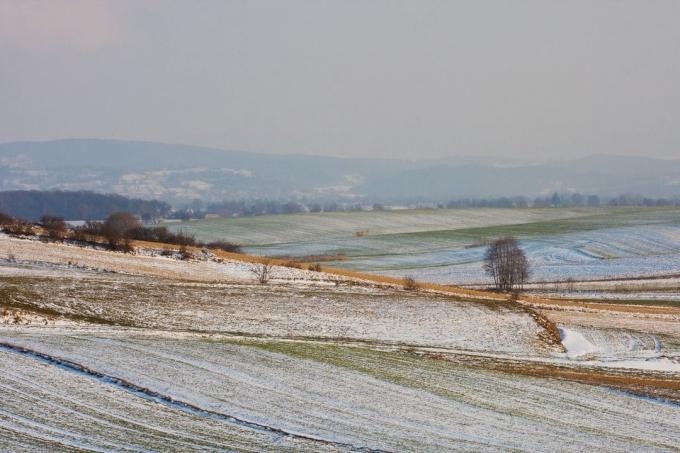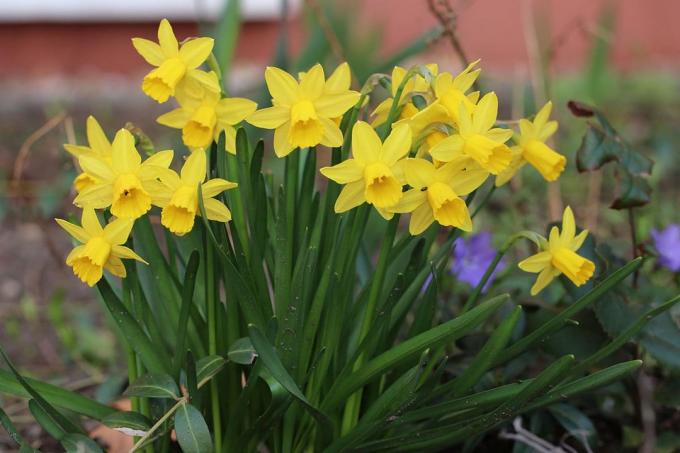
table of contents
- What are pawn rules?
- Farmer rules in March
- 3. March is Kunigund
- Who is Kunigunde?
- frequently asked Questions
Old farmer rules and also weather rules in March pass on the knowledge and experience of our ancestors. A particularly large number of saints' memorial days were included in these observations, such as Saint Kunigunde.
In a nutshell
- Remembrance day of Saint Kunigunde on 3. March
- Kunigunde announces spring
- Farmer rules are based on experience and weather observations
- are partly still valid today
What are pawn rules?
For many centuries, the weather has been observed mainly by the farmers in order to derive regularities and relationships. This was important because it allowed them to make the appropriate arrangements for their work. The observations were important for the farmers, as the weather always decided whether the harvest was good or bad. Since reading and writing was mostly a privilege in earlier times, the experiences became and the knowledge that has arisen in the peasant rules from generation to generation orally and in rhyme form passed on. Most of these rules were associated with Christian saints, including, as in March, with the day of remembrance of Saint Kunigunde. In addition, the first three days of March can provide information about the weather for the coming months:
- "Like the first of March, like the spring."
- "Like the second of March, like the summer."
- "Like the third of March, like the autumn."

Note: In ancient Rome, the beginning of the year was not celebrated in January, but only on the 25th. March if sowing was normal. As the first month of the year, it was named after the Roman god of war Mars. In old German the month is called "Saatmond".
Farmer rules in March
- "March rain is not followed by a summer blessing."
- "March should come like a wolf and go like a lamb."
- "A lazy, damp March is pain for every farmer."
- "March sun - short bliss."
- "Don't be afraid of the snow in March, a warm heart beats underneath."
- “If in March the violet bloom, to Ludwig (25. August) often pull the swallows. "
- "Snow that only blows in March, comes in the evening and immediately goes away."
- "If you see yellow flowers in the open air in March, you can confidently sprinkle your seeds."
- "If you sow too early in March, it's often a wasted effort."
- "If there is too much rain in March, the harvest brings little blessing."
- "If March lets itself dry, it brings bread for everyone."
- "Märzenstaub brings grass and leaves."

Tip: You can find more farmers' rules for each month at Plantopedia or here.
3. March is Kunigund
With the beginning of the meteorological spring on 1. March the dark and long winter is said goodbye and it is slowly getting warmer. On the 21st According to the calendar, spring begins on March. The feast day of Saint Kunigunde on 3. March symbolizes the end of the cold season. Kunigunde comes from the Germanic language and means “clan” and “fight”. At the beginning of the spring month there is also a struggle between winter and spring, i.e. between the eastern cold front and the western warm currents. The observations of the weather that day inspired our ancestors to do the most diverse Weather forecasts not only for this month, but sometimes for the rest of the year decisive. There are different weather rules for the 3rd March:
"Kunigund makes it warm from below."
Here are the first anticipations for the coming spring. It gets warm and so the cold of winter is driven away.
"Laughing Kunigunde brings us good news."
A beautiful day without rain was a good sign that it was slowly getting warmer and that the farmers could harness their horses for field work.
"If Kunigunden freezes, she will feel it for another forty nights."
Based on the weather observations, not only the approaching spring was predicted, but also other cold winter days.
"If it thunders around Kunigund, the winter will keep it colorful for a long time."
Even with early thunderstorms in the spring month, our ancestors had made their observations and knew that Kunigunde would not bring anything good.
"If Kunigund has tears, the barn often stays empty."
In addition, rain was not wanted on that day, because it did not have a particularly good effect on the expected harvest that year. According to observations, it was sometimes absent or very slight.

Note: Another general farmer's rule in March: “March rain brings little summer blessing”.
Who is Kunigunde?
Kunigunde is a saint of the Catholic Church. She is particularly venerated in Bamberg, where she was involved in founding the diocese. She and her husband, Emperor Heinrich II. there are the patrons. Kunigunde had to undergo a divine judgment to prove her innocence as she was accused of adultery. According to legend, she walked over glowing plowshares with bare feet and did not injure herself. Her inviolability became a sign of her holiness and chastity.

Note: “So much fog in March, so much frost in May, so much thunderstorm in summer.” From a meteorological point of view, however, there are no connections here.
frequently asked Questions
Some weather observations that were passed down in the old peasant rules can still be used today. Sometimes they give good recommendations for a wide variety of tasks in the garden. However, due to the modern weather forecast, the old weather wisdom has largely lost its importance.
Even if the weather is mild in spring, winter doesn't have to be over yet. Sleet showers, night frosts and snow showers can still occur in April. Perhaps the other way around, March is inconsistent, followed mostly by unfriendly and cool April weather.
The temperature differences between day and night now differ significantly from the temperatures in the winter months. However, snow can still fall from time to time. However, this does not stay there for long, but often thaws away again quickly.
Spring storms are part of March. Wind is created when a pressure force acts on the air. This flows from areas with a higher air pressure to areas with a lower air pressure. The midpoint of these flow areas is referred to as high and low. The greater the pressure difference, the stronger the wind blows. Farmers have always valued the wind as it pollinates the plants and ensures a good harvest.



